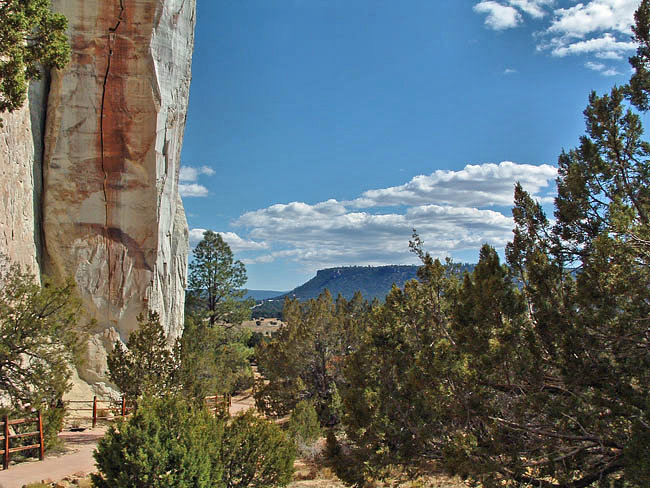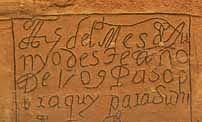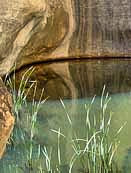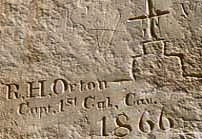|
Scenic USA - New Mexico Inscription Rock |

| Photos by Ben Prepelka Ben Prepelka Photography |
Spaniards dubbed it El Morro, the headland. American travelers called it Inscription Rock.  And geologists refer to it as a cuesta. On the west side of Inscription Rock the ground gently slopes to the top. In contrast, on the east side of El Morrow is a steep cliff face. Here at the base of this massive cliff lies a precious water hole that early travelers so desperately needed. While they lingered in the afternoon shade, a natural pastime of carving their names into the near vertical rock face took place.
And geologists refer to it as a cuesta. On the west side of Inscription Rock the ground gently slopes to the top. In contrast, on the east side of El Morrow is a steep cliff face. Here at the base of this massive cliff lies a precious water hole that early travelers so desperately needed. While they lingered in the afternoon shade, a natural pastime of carving their names into the near vertical rock face took place.
Dating back centuries, early puebloan petroglyphs, and both Anglo and Spanish names and initials were  carved into the rock. The visitor's center at El Morro National Monument will loan a detailed notebook with a location and translation of the majority of the rock inscriptions. A half mile loop trail leads up to the wall carvings at the base of the hill.
carved into the rock. The visitor's center at El Morro National Monument will loan a detailed notebook with a location and translation of the majority of the rock inscriptions. A half mile loop trail leads up to the wall carvings at the base of the hill.
The park's towering landmark was first discovered by American Army Topographical Engineers, James H. Simpson and Richard Kern, in 1849. So impressed with this historic site, the pair stayed for a few days drawing the inscriptions and properly describing Inscription Rock.
About a two and a half hour drive from Albuquerque, El Morro National Monument is open nearly every day, providing campsites and picnic areas. Aside from the trail to Inscription Rock, a two mile Mesa  Top Trail continues from the lower trail. Here at the top of the mesa visitors may view ancient pueblo ruins and a marvelous panorama of El Morro. Archeological evidence estimates the pueblo was built about 800 years ago. Perhaps unusual patterns of heat or drought may have driven the Zuni people to the cooler air at the top of this mesa. Measuring 200 by 300 feet, it's estimated that the pueblo may have housed 1000 to 1500 people in 875 interconnected rooms. Steps for hands and feet, carved into the rock face, indicate some residents scaled the wall frequently. The alternate trail up the long slope for early Zuni residents is still in use today.
Top Trail continues from the lower trail. Here at the top of the mesa visitors may view ancient pueblo ruins and a marvelous panorama of El Morro. Archeological evidence estimates the pueblo was built about 800 years ago. Perhaps unusual patterns of heat or drought may have driven the Zuni people to the cooler air at the top of this mesa. Measuring 200 by 300 feet, it's estimated that the pueblo may have housed 1000 to 1500 people in 875 interconnected rooms. Steps for hands and feet, carved into the rock face, indicate some residents scaled the wall frequently. The alternate trail up the long slope for early Zuni residents is still in use today.
Area Map

|
More Area Attractions |
|
Copyright © 2022 Benjamin Prepelka
All Rights Reserved
